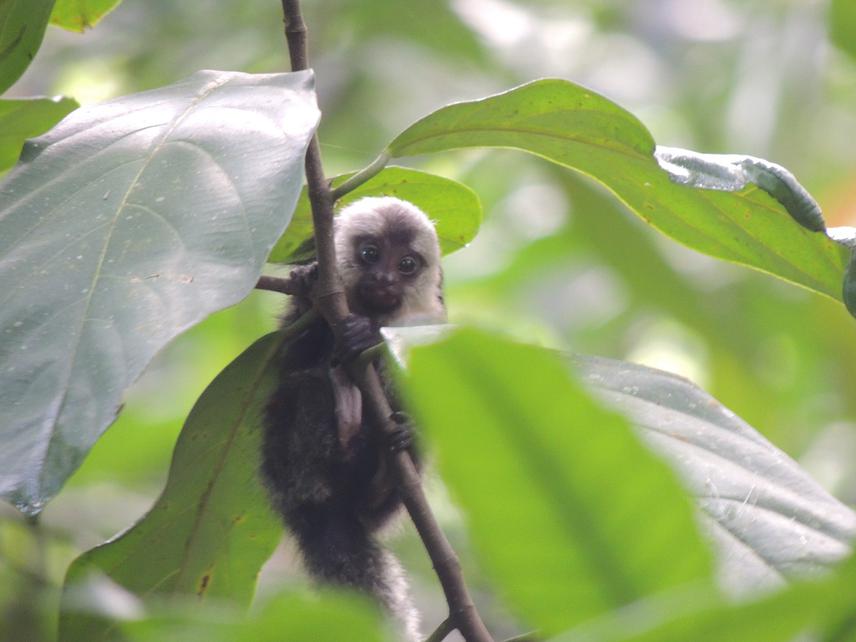Atilla Ferreguetti
Other projects
7 Sep 2016
Density Estimates of Four Primates Species in the Vale Natural Reserve, Espirito Santo State, Brazil
This project aims to contribute to the population estimates of these four primate species threatened with extinction after the outbreak of yellow fever in the region. With these estimates we can compare with the scenario before the outbreak and verify the size of the impact for these species. This project is urgent considering the number of individuals found dead during the outbreak.

A Callithrix geoffroyi cub photographed during the samplings at the Vale Natural Reserve.
During the period from December 2016 to March 2018, a yellow fever outbreak spread throughout the southeastern states of Brazil, including Vale Natural Reserve. In this context, the overall objective of this project is to provide a discussion of how this impact affected the population of four primate species (i.e. Alouatta guariba, Callicebus personatus, Sapajus robustus and Callithrix geoffroyi) in the Vale Natural Reserve.
This information is necessary, mainly to measure the impact of the outbreak of yellow fever on the populations of these endangered species in the Atlantic Forest of the state of Espirito Santo. To estimate density of the four Primates species (i.e. the Crested Capuchin – Sapajus robustus; the Brown Howler – Alouatta guariba; the Atlantic Titi – Callicebus personatus; the Geoffroy’s Tufted-ear Marmoset Callithrix geoffroyi), we established ten 5 km-long line transects stratified by habitat type in our study area. Among the many existing techniques to estimate the density and size of natural populations, distance sampling, it is one of the most robust currently used for primates. This technique is based on the silent detectability of animals along linear transects. This method is often used to assess populations of primates in the tropical forests.
This project will provide important information for these four endangered primate species. It is important and urgent to ascertain the extent of the impact of the outbreak of yellow fever in these populations. Our results will aid in order to assess the extent of this impact and provide an overview on the conservation of these species. We hope that the results that we get from this project, will allow us to produce some conservation actions and predict the next steps for the study of Primates in this Reserve.